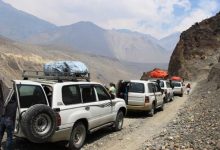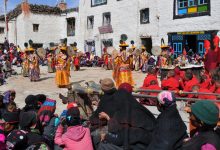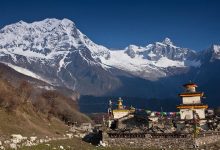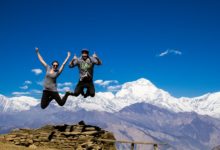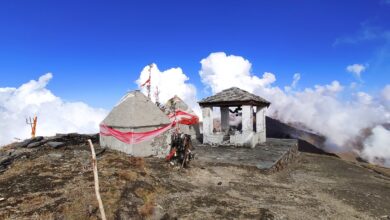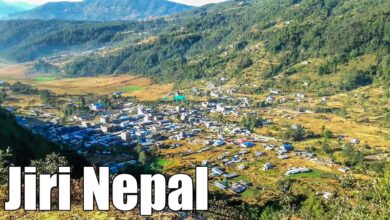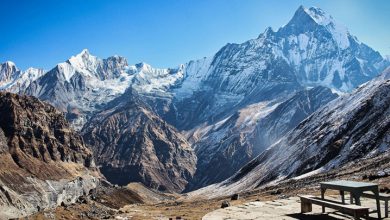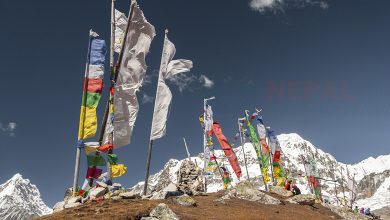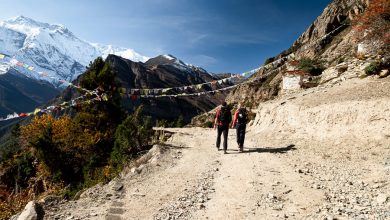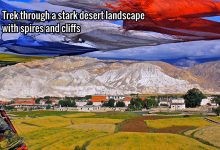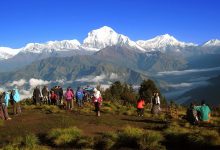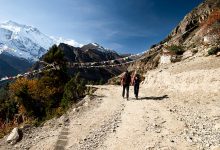Trekking in the Everest Region
The Everest region is located in the north-east of Nepal. Everest trekking is not only famous destination among tourists but also for its scenic views of the highest peak of the world, the Mt. Everest [8,848m] along with other peaks lying around the region.
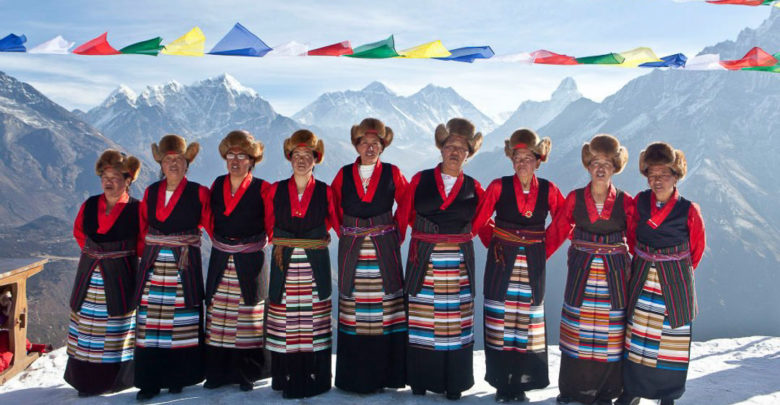
- Experience the highest national park in the world
- Experience Sherpa culture, villages, and climbing culture
- Like all mountains around the world, the local, indigenous people were the first to see it
- Everest is called Sagarmatha in Nepal. It means goddess of the sky
- In 1955, the height was adjusted to 29,028 feet and is still used by Nepal
- In 1865, it was named Mount Everest, after Sir George Everest
Mount Everest, known in Nepali as Sagarmatha and in Tibetan as Chomolungma
Particularly, you will get to witness the world’s highest peak, Everest (8,848m) which is also known as ‘Sagarmatha’ and several other mountains over 8000m, like- Lhotse, Cho Oyu and Makalu.
Apart from the gigantic snow-white mountains, you will also notice the mountain ecosystem, superb geographical part of Solukhumbu, meet with friendly Sherpa people, and observe wide varieties of plants and animal life in the national park.
The major attractions of Everest Region are exploring Sherpa Museum, knowing Sherpa Culture and their way of life in Khumjung Village, scenic turquoise Gokyo Lake, Cross Chola Pass (5300m), Kangma La (5500m), and Renjo -La (5400), Khumbu Ice Fall from Everest Base Camp, visit Tengboche Monastery and many more.
Trekking in the Everest region is a remarkable experience that offers a range of benefits and attractions:
- Adrenaline Rush: The journey begins with a thrilling flight to Lukla, known as one of the most dangerous airports in the world due to its short runway.
- Teahouses: Along the trek, you can stay in unique teahouses which are a part of the local culture.
- Wildlife: You might encounter unique animals near Mount Everest Base Camp.
- Namche Bazaar: This bustling town is a hub for trekkers and offers a glimpse into the local Sherpa culture.
- Mental Detox: The trek provides an opportunity to disconnect from the digital world and rejuvenate mentally.
- The People: Meeting fellow trekkers and locals can lead to lasting friendships and cultural exchange.
- Monasteries: Visiting ancient monasteries offers a spiritual dimension to the trek.
- Views: The panoramic views from Mount Everest Base Camp are unparalleled.
- Sense of Accomplishment: Completing the trek gives a profound sense of achievement.
- Suspension Bridges: Crossing the iconic suspension bridges is an experience in itself.
- Knowledge Gained: Learn about the local culture, geography, and mountaineering history.
- Fitness: The physical challenge of the trek can improve your overall fitness.
- Unique Experience: Simply because it’s a once-in-a-lifetime adventure that few get to experience.
These are just a few of the many reasons why trekking in the Everest area is a must-do for adventure enthusiasts and nature lovers alike. It’s not just about reaching the base camp; it’s about the journey, the culture, and the personal growth that comes with it. If you’re considering it, this could be the sign you need to take on the challenge
Accessing Your Trek
To access the Everest Region, most people take a flight from Kathmandu to Lukla, from where you start the climb toward Namche Bazaar (usually done in two days). Alternatively, if you have more time and are interested village life, it’s best to start your trek from Jiri or Salleri, four days walk south of Lukla. To reach Salleri, you’ll need to take public or private road transport from Kathmandu. Starting your trek from Salleri or Jiri is a great option if you have the time.
Weather in the Everest region:
With Nepal situated in the Northern Hemisphere, its main variations in temperature coincide with the European seasons. Beyond this though, the climate is heavily affected by two main forces: winds coming over the Bay of Bengal to the south and winds coming from the main Asian continent to its north.
In the summer months, from June to August, the winds coming from the Bay of Bengal dominate, bringing in the South East Asian monsoon. In the winter, from December to February, the winds from the main Asian continent dominate bringing very cold weather.
You may have read about how critical the timing is for the attempts to climb Everest and this is because there is a very short window when the winds from the North and South cancel each other out creating a period of calm. The variation in wind strength on Everest is shown in the chart opposite. Fortunately conditions lower down are much more benign.
The net result of these continually balancing climate influences are that the average temperatures and rainfall at Everest base camp are below. Of course, in the winter months most of the precipitation at base camp is snow.
Alternative Way to See Mt. Everest:
If you’re looking to experience the grandeur of Mount Everest in just one day, there are several options available:
- Helicopter Tour: An Everest Base Camp Helicopter Tour with landing offers a close-up view of Everest and the surrounding Himalayas. This tour typically includes a landing at Everest Base Camp or Kalapatthar for a short period, allowing you to step foot in the Everest region and enjoy the breathtaking views.
- Scenic Mountain Flight: A scenic flight from Kathmandu provides panoramic views of the Everest range. This one-hour flight gives you a bird’s eye view of Everest along with other majestic peaks.
- Everest Experience with Breakfast: Some tours offer a luxurious breakfast at the Hotel Everest View in Syangboche, combining a Everest helicopter tour with a meal amidst the mountains.
These options are designed for those who have limited time but still wish to witness the beauty of the world’s highest peak. Each provides a unique perspective of Everest and can be a memorable addition to your travel experiences.



